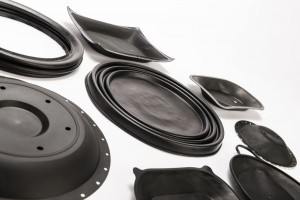Modification of fluoroelastomers based on TFE-P copolymer to improve cure speed, physical properties and mold release
Keisuke Yagi – AGC Chemicals Americas
Fluoroelastomers are used for applications where severe heat and chemical resistance are required. FEPM is based on an alternating copolymer of tetrafluoroethylene (TFE) and propylene (P). It is well known to have excellent chemical resistance against organic and inorganic acids and bases, especially amines formulated in various automotive lubricants. Fluoroelastomers consisting of vinylidene fluoride and hexafluoropropylene (FKM) are not as resistant to organic and inorganic bases, especially aqueous solutions of bases at high temperatures. However, FEPMs demonstrate difficulties in processability. For example, they exhibit insufficient performance with curability and mold release, especially in compression set processing. Several cure systems have been proposed to improve the curability and processability.
Most cure systems are made by introducing a cure site monomer by polymerization. Common cure site monomers are vinylidene fluoride, vinyl fluoride, vinyl chloride, trifluoroethylene, trifluoropropylene and pentafluoropropylene. Traditional cure promoters include quaternary phosphonium or ammonium salts. These cure systems improve the curability and mold release, but base resistance, especially amine resistance, becomes worse due to the cure site monomer.

